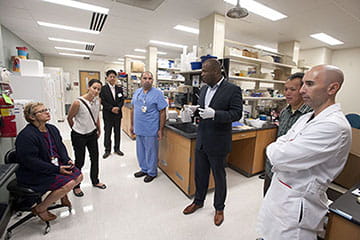A transplant is often the only option for a patient’s recovery when their organs fail. From enlarged hearts to livers ridden with disease, many people find themselves waiting months or even years for a transplant that will save their life. However, despite the great need for donation, there is still a shortage in organ donors, leaving more than twenty people a day in the United States who die waiting for organ donation. To help meet the growing need for donation, experts at IU School of Medicine are working to advance research in xenotransplantation using 3D bioprinting.
Growing Cells and Growing Hope
Experts at IU School of Medicine are one of two institutions to use Regenova 3D bioprinting technology. Adapted by Cyfuse Biomedical, Regenova is operated with a Windows machine using custom software which permits customized tissue construct design and automated cell placement. This system relies on a scaffold-free method to generate tissue constructs using the Kenzan Method. In this method, extremely dense sphere cell materials are skewered onto an array of needles. Over time, the cells begin to fuse and form a solid structure, where they are then placed in a bioreactor.
This advanced technology will enable researchers at IU School of Medicine and beyond to set the stage for future advancements toward the growing demand for organ donation.



